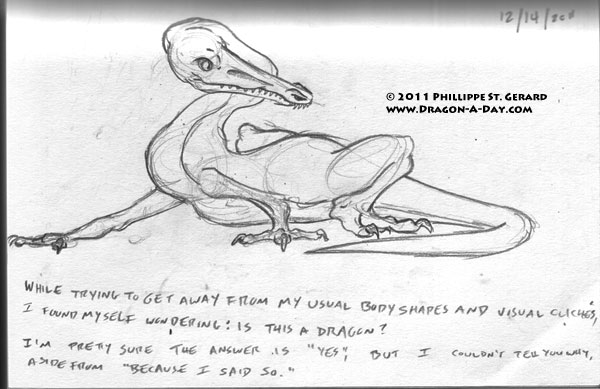I’ve wondered about the nature of dragon-ness before, and I have not come up with an answer that I could really accept. Dwelling on it a little more led me to realize that the dragon, as multiform and ubiquitous as it has been depicted throughout history, is something of a politely nodding agreement between people.
Think about it. If a bedraggled peasant from Europe’s Dark Ages were to see a modern, predator-sleek, skin-winged Western-style dragon, what would they make of it? While it probably shares several traits in common with the wyrms of old, it’s a bit of a stretch. Many of the more famous dragons of that time period even lacked wings and fire as we know them today; perhaps our theoretical peasant might have thought that the dragon was some sort of strange bird or overgrown lizard, but quite probably not a dragon.
Or so I say. I’m sure that there’s some research that could be done about the semiotics of the draconic form, but I’m not in the mood. Suffice it to say that the form of the (western) dragon has shifted over time, and in another few hundred years, it will doubtless shift again, perhaps along with its function, as it has once before.



I mean– again, this is the team I’m on. I think the hypothetical peasant WOULD recognize Smaug as a dragon, but I think they would also say the dinosaurs in Jurassic Park were dragons, too.